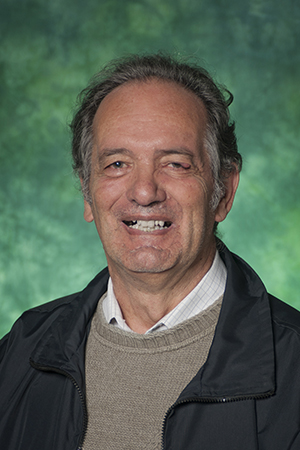Professor - Department of Physics
University of North Texas
Title: Self-Organized Temporal Criticality: from Biology to Physics
Abstract:
This Colloquium illustrates the recent research work done by the Center of Nonlinear Science (CNS) for the
foundation of a bridge between biology and physics, moving from biology to physics, namely reversing the directions
of the conventional reductionist approaches. The earlier research work of CNS had established the importance of
the processes of phase transitions in systems with a nite number of interacting units. At phase transition these
units tend to establish a correlation with the other units, and these correlated dynamics are aected by a special
kind of organizational collapses: The time distance between two consecutive collapses have an inverse power law
distribution density. These collapses led to the denition of crucial (complex) events that were found to be the key
ingredient for the transport of information from one to another complex network. Information moves from the complex
networks with lower power index to complex networks with higher inverse power law index. We propose a unifying
theoretical approach recovering all these properties with no use of nely tuned control parameters, resting instead on
self-organization. We call this new approach to phase transition, Self-Organized Temporal Criticality (SOTC).
The SOTC is inspired to the eld of Evolutionary Game Theory, aiming at explaining the emergence of cooperation
in spite of the well known fact that the adoption of Prisoner's dilemma game shows that the winning strategy is always
the choice of defection. Rather than using the widely adopted property of network reciprocity, SOTC rests on the
assumption that the choices of the single individuals are determined by the social sensitivity to the choices of the nearest
neighbors and that the single individuals increase or decrease their social sensitivity so as to maximize their payo.
The degree of social sensitivity is a form of control parameter that make the interaction between each individuals
and their nearest neighbors similar to the well known Ising model used by physicists to study phase transitions, with
the important dierence that the control parameter is not xed but changes in time and moves toward a condition of
dynamical equilibrium with a uctuating majority of cooperators. These uctuations host crucial events of the same
kind as those proved by the earlier investigation of CNS to determine the ow of information, leading therefore to the
discovery that information moves from biological to physical systems rather than from physical to biological systems.
We argue that these results may settle two main problems: (a) the eciency of enzyme catalyzers and (b) the origin
of biological rhythm.
The intensive work based on computational molecular dynamics has left unanswered the question of why enzyme
catalysis is not limited by the prescription of transition state theory. We show that SOTC yields support to a proposal
made 32 years ago on the key role of heterogeneous thermal noise to bypass the limits of ordinary statistical physics.
The adoption of SOTC will shed light into the general phenomenon of rhythm and respiration of biological pro-
cesses. The occurrence of SOTC-induced crucial events correspond to \free-will" conditions allowing extremely weak
uctuations, mirroring the cyclical nature of environment, to select the direction to go after an organizational collapse.
This suggests that coherent resonance should be replaced by the concept of complexity matching.
The broad impact of SOTC extends from mathematics and physics to sociology and psychology.
*Refreshments will be served before the colloquium*


